
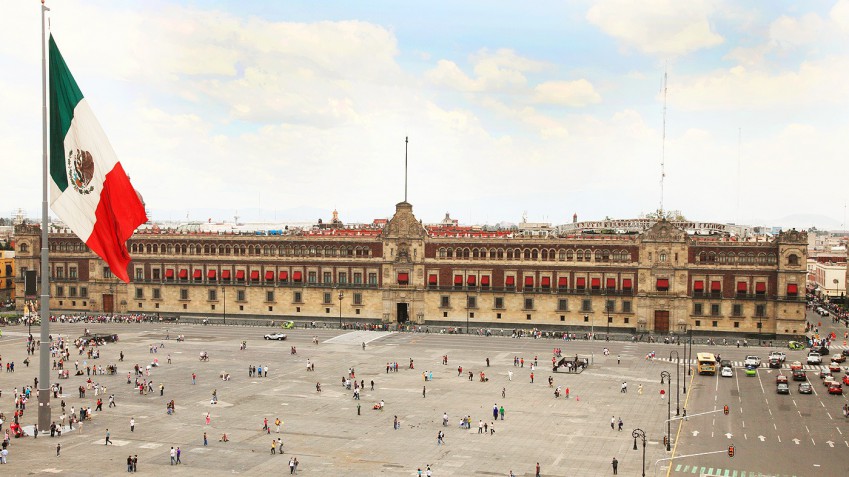
The National Palace takes up the entirety of the east side of the Zócalo. It’s the seat of the Executive Branch of the Mexican Federal Government. It takes up some 40,000 square meters and has been a World Heritage Site since 1987.
Construction began on the complex in 1522. It was to be the second private residence of Hernán Cortés, built on top of part of the existing palace of the Huey Tlatoani, Moctezuma Xocoyotzin. This palace was known then as the New Houses. With the fall of ancient Tenochtitlán, the Spanish Crown declared it the seat of the Viceroys of New Spain. It operated as such for about 300 years.
A great fire destroyed much of the complex in 1692. The palace was rebuilt over the next several decades. With Mexican independence in 1821, it became the seat of the executive, legislative, and judicial powers. This remained the case despite the 19th century’s multiple regime changes between republican and monarchical regimes. It was also the personal residence of all the rulers between 1822 and 1884, with the exception of Maximiliano who resided in Chapultepec Castle from 1864-67. Thereafter, the presidential office was in the National Palace until 1968. It partially served again as the presidents’ office beginning in 2012, and fully in 2018.
It has permanently served as the setting for official, protocol, and civic acts of the Presidency of the Republic throughout all of these years. Heads of State and foreign governments are received here, credential letters from the diplomatic corps are delivered here. The official Cry of Dolores festivities are held here each September 15th, and Mexican Independence is celebrated here on the following day.
Over the past 500 years of its history, the building has been modified and extended many times. The National Palace bears Neoclassical, Baroque and Neo-Colonial elements. The present appearance is the result of major work during the second decade of the 20th century when a third level was added.
With a valuable historical-artistic heritage, the Diego Rivera murals are magnificent examples of the art that can be found inside.
Visits are by guided tour only. Prior reservations should be requested to visitas_guiadas@hacienda.gob.mx or at the entrance to the SHCP Museum, Museo de la Secretaría de Hacienda y Crédito Público.
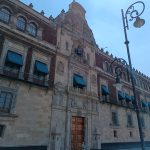 The so-called "Casas nuevas de Moctezuma" (The New Houses of Moctezuma) became the property of Hernán Cortés. He sold the property to the Crown of Spain and today it is a palace with two courtyards. This soon grew and expanded to include the offices of the Court Jail, housing for the Viceroy's court, the offices of the Royal Audience, and the Mint, among other governement entities. The palace was partially destroyed in the riot of 1692 and rebuilt shortly thereafter. Many great architects fought for the title of "Master Builder of the Royal Palace."
At the beginning of the 20th century, an additional floor was added, reaching the shape and dimensions we see today. The façade has three doors, and in the central door is bell tolled by the priest Miguel Hidalgo in the Parish of Dolores Hidalgo. This was considered the starting point of the active Independence movement that began in 1810. The door facing Moneda Street is called the "Puerta Mariana" and the south door is known as the "Puerta de Honor." In the staircases and the walls of the upper floor of the main patio are a cycle of murals executed by Diego Rivera from 1935 onwards and unfinished. The title is the "Epopeya del pueblo mexicano" (Epic of the Mexican people). The old palace has resisted countless sieges, bombardments, rifle fire and shrapnel. It was taken by USA and French troops. Today it serves as the residence of the President of the Republic and as an administrative and cultural center.
The so-called "Casas nuevas de Moctezuma" (The New Houses of Moctezuma) became the property of Hernán Cortés. He sold the property to the Crown of Spain and today it is a palace with two courtyards. This soon grew and expanded to include the offices of the Court Jail, housing for the Viceroy's court, the offices of the Royal Audience, and the Mint, among other governement entities. The palace was partially destroyed in the riot of 1692 and rebuilt shortly thereafter. Many great architects fought for the title of "Master Builder of the Royal Palace."
At the beginning of the 20th century, an additional floor was added, reaching the shape and dimensions we see today. The façade has three doors, and in the central door is bell tolled by the priest Miguel Hidalgo in the Parish of Dolores Hidalgo. This was considered the starting point of the active Independence movement that began in 1810. The door facing Moneda Street is called the "Puerta Mariana" and the south door is known as the "Puerta de Honor." In the staircases and the walls of the upper floor of the main patio are a cycle of murals executed by Diego Rivera from 1935 onwards and unfinished. The title is the "Epopeya del pueblo mexicano" (Epic of the Mexican people). The old palace has resisted countless sieges, bombardments, rifle fire and shrapnel. It was taken by USA and French troops. Today it serves as the residence of the President of the Republic and as an administrative and cultural center.
Heart of Mexico Walking Route: Zocalo - Templo Mayor
<< Templo Mayor | Old City Hall Building >>
Proyecto “Corredor de Cultura Digital”.
Nombre de la investigación: Investigación Centro Histórico, Monumentos, Edificios y Puntos de Interés (2023)
Dirección de investigación y diseño de Rutas: Acércate al Centro A.C. Guadalupe Gómez Collada
Coordinación e investigación histórica: Fideicomiso del Centro histórico Dir. Maestra Loredana Montes
 visitas_guiadas@hacienda.gob.mx
visitas_guiadas@hacienda.gob.mx
 +52 (55) 3688 1255
+52 (55) 3688 1255
 http://www.palacionacionaldemexico.mx/
http://www.palacionacionaldemexico.mx/

Nearest at 0.03 kms.
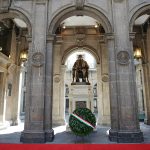
Nearest at 0.09 kms.
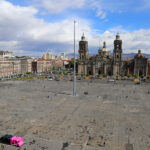
Nearest at 0.12 kms.
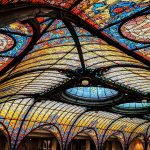
A landmark hotel on the edge of Mexico City's main plaza . . .

One of the most important sites in the city, even today, don't miss the chance to visit the Templo Mayor.

There's no center like the very center, and in Mexico City, that means el Zócalo!

The first Cathedral to have been built in the Americas.
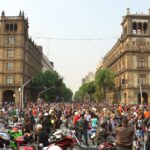
Among the earliest on the buildings on the Zócalo, it's still the seat of City government.